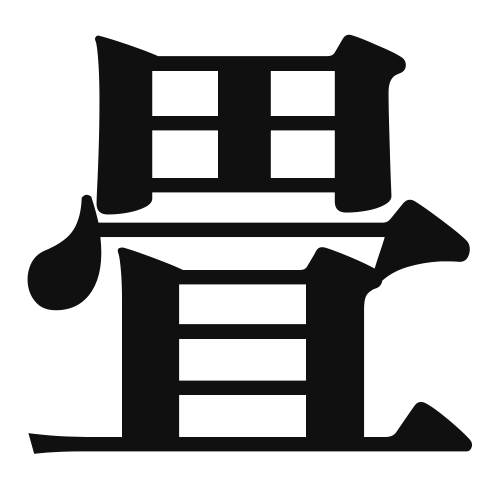1. Overview of Meaning
The kanji “畳” (tatami) refers to a traditional Japanese mat made of rice straw and covered with woven rush grass. It is commonly used as flooring in Japanese homes and is an essential element of Japanese interior design.
2. Formation and Radicals
Formation of the Kanji: The kanji “畳” is a combination of two components: the radical “田” (rice field) and the phonetic component “畳” (which indicates the reading). It is classified as a compound ideograph (会意文字), as it combines elements that represent both meaning and sound.
Radical: The radical of “畳” is “田,” which relates to agriculture and farming, reflecting the kanji’s connection to rice straw.
3. Examples of Usage
Common Words and Phrases:
- 畳 (たたみ, tatami) – tatami mat
- 畳敷き (たたみじき, tatami-jiki) – tatami flooring
Example Sentences in Daily Conversation:
- この部屋は畳でできています。 (This room is made of tatami.)
- 畳の上で寝るのが好きです。 (I like sleeping on tatami.)
4. Synonyms and Antonyms
Similar Kanji:
- 敷物 (しきもの, shikimono) – mat or rug, but it can refer to various types of floor coverings, not just tatami.
Antonyms:
- フローリング (furōringu) – flooring, specifically referring to wooden floors, which contrasts with the soft texture of tatami.
5. Cultural and Historical Background
The tatami mat is deeply rooted in Japanese culture, often associated with traditional tea ceremonies, martial arts, and the concept of “wabi-sabi,” which appreciates the beauty of imperfection. Tatami rooms are also integral to the design of traditional Japanese homes.
Proverbs and Idioms:
- 「畳の上で死ぬ」 (たたみのうえでしぬ, tatami no ue de shinu) – “to die on the tatami,” which means to die peacefully at home.
